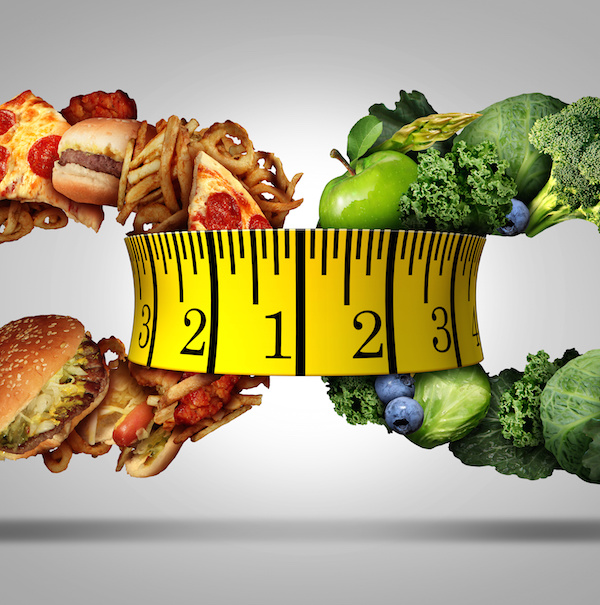
THURSDAY, March 10 (HealthDay News) — In a finding that contradicts earlier research, an international study suggests that being obese boosts the likelihood of a heart attack or stroke regardless of where the excess fat is stored in the body.
That challenges the widely adopted notion that not all obesity is alike, with so-called apple-shaped people, who carry fat mainly in their midsections, facing a bigger risk for heart problems than those whose excess fat is carried on the hips or elsewhere.
Not so, say the researchers behind the new study. When it comes to obesity and heart disease, no excess fat is good fat, regardless of where it ends up, their analysis has found.
“Society has accepted the idea that if you carry more weight around the middle, your risk of heart disease is higher,” said Dr. Emanuele Di Angelantonio, the study’s co-author and a lecturer in medical screening at the University of Cambridge in England. “But actually this study shows that it doesn’t matter where your fat is located. If you’re overweight you’re at risk, full stop.”
Complicating matters, however, is the study’s additional finding that the standard diagnostic measurements of fat — such as body mass index (BMI), waist circumference and waist-to-hip ratio — are not the most reliable tools for assessing heart disease risk.
Better indicators, it says, are blood cholesterol measurements and blood pressure readings.
“While excess fat level does remain a very important risk factor, for [doctors] who really want to predict cardiovascular risk in patients, it is enough to look at cholesterol, blood pressure, diabetes and smoking background, regardless of the patient’s obesity status,” Di Angelantonio said.
The study’s findings, developed by a global team of 200 scientists from 17 countries and based at the University of Cambridge in the United Kingdom, are reported online March 11 in The Lancet.
To explore the predictive power of various heart disease risk factors, the researchers examined data from 58 studies that included more than 222,000 men and women from 17 countries.
None of the study participants had a history of heart disease. Data for most people included BMI readings, waist circumference measurements, waist-to-hip ratios, age, gender, smoking history, blood pressure readings, diabetes history and cholesterol measurements. For nearly 64,000 people, fat deposit assessments were conducted periodically for a number of years.
Over about a decade, more than 14,000 participants had a heart attack or a stroke.
The study concluded that being obese certainly raises the overall risk for heart disease, but that those who carry much of their excess fat in the stomach region do not appear to face a particularly higher risk, compared with those whose fat deposits are distributed differently.
They also found that tracking a person’s blood pressure and cholesterol levels, as well as monitoring their history of diabetes, appeared to be best way to assess heart disease risk. When such indicators were readily available, they noted, adding in BMI and waist measurement information did not improve risk diagnosis.
The team was quick to emphasize, however, that being obese should not be deemed any less of a problem when it comes to heart disease. Excess weight, they said, remains a key culprit in the onset of medical conditions that boost the risk for cardiovascular illness.
Because of that, they suggested, calculations of weight, waist circumference and BMI might continue to be of value because the patient portrait they create can help health-care providers promote better diets and lifestyle choices that ultimately reduce risk. An editorial accompanying the study in The Lancet agreed, noting that BMI measurements can still serve as an early warning signal, especially in teens, young adults and middle-aged people without many other obvious signs of heart disease risks.
Dr. Walter Willett, a nutrition professor at Harvard Medical School and chairman of the nutrition department at the Harvard School of Public Health, indicated that the study conclusions make sense.
“It was not surprising that measures of fat distribution, such as waist circumference, did not do substantially better” in predicting heart disease, he noted.
But he said that obesity as a whole remains a key consideration, given that the factors that proved most useful in assessing heart risks — such as high blood pressure and cholesterol — are themselves the product of the “adverse effects of overweight.”
Lona Sandon, a registered dietician and assistant professor of clinical nutrition at the University of Texas Southwestern, agreed that the findings “are reasonable in the grand scheme of things.” But she, too, stressed that the findings should not be interpreted as permission to pack on the pounds.
“First of all, certainly people who are obese, no matter where the obesity is occurring on the body, should not dismiss their risk for heart disease,” she said. “Carrying around excess weight puts you at a higher risk for heart disease than someone of normal weight, period.”
“So while I’m not necessarily surprised that metabolic testing to measure your cholesterol levels, for example, is a better indicator of risk than, say, BMI, people should still be concerned about what’s going on around their waistline,” Sandon said. “In the end, people should think of that extra weight as a risk factor that leads to more risk factors, which lead to heart disease.”
More information
The American Heart Association has more on obesity and heart disease.

